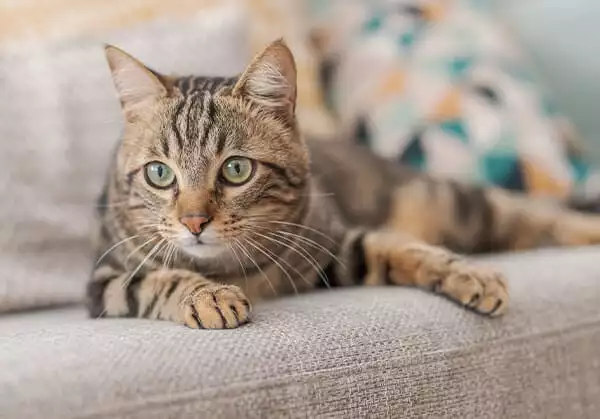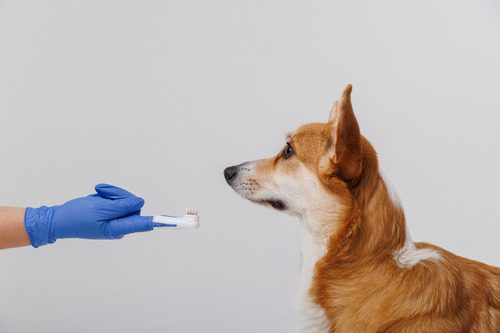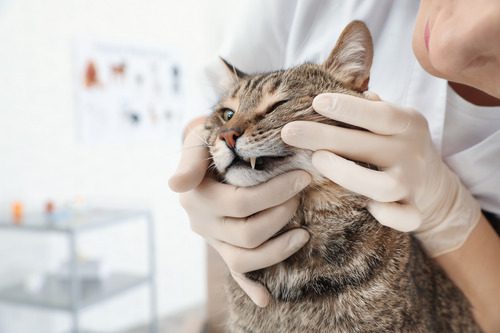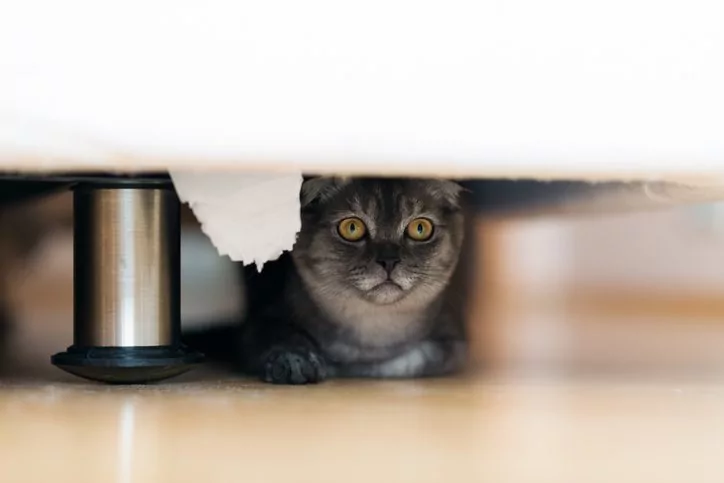Raleigh, NC Cat Owners: What Are the Signs of a Blocked Cat?
For cat owners, a urinary blockage is a terrifying thing. It often comes down to an urgent trip to your veterinarian or emergency vet and can be a costly and worrisome treatment. In some cases, by the time you realize something’s amiss, it is too late. It’s important to understand the symptoms so you can get your feline friend treated – the sooner, the better!
Below, we’ll go over the signs of a blocked cat and what you should do if you notice any of these symptoms in Raleigh, NC.
What are Causes of Blockage in a Cat?
There are a few causes of urethral blockage, all of which can be life-threatening if not treated in a timely manner.
Urethral Obstruction
This happens most often when a buildup of protein, crystals or small stones become lodged in your cat’s urethra – the tube that goes from the bladder to outside the body. Cats in general have a very narrow urethral tube.
While not always the case, neutered male cats are the most susceptible to these issues. This buildup creates a blockage through which very little or no urine can be passed. If your cat has had a urinary blockage in the past, they are much more likely to have a recurrence.
Urethral Spasms
These spasms happen most often in neutered male cats. It happens when the urethral sphincter muscle – the muscle around the cat’s urethra – spasms involuntarily. These contractions can restrict any passage of urine outside of the body.
Urethritis
Urethritis is an inflammation in the urethra. This can happen as a result of trauma, infection or even possibly cancer. The inflammation constricts the urethra to the point that little or no urine can be passed. The urge and urgency to need to urinate will increase in your cat. Unlike urethral obstruction and spasms, both male and female cats are known to have this.
If your cat has had a urinary blockage in the past, they are much more likely to have a recurrence.
What Are the Symptoms of a Blocked Cat?
Like people, cats show distress and discomfort in varying ways. It’s important to keep an eye on your cat if she is behaving in any manner different from usual, however there are common signs of urinary blockage that most cats display.
Frequent Trips to the Litter Box
This is due to the inability to fully empty the bladder, or irritation of the bladder walls and/or urinary tract making them feel as though they have to urinate often.
Producing Only a Few Drops of Urine at a Time
When the urinary tract is inflamed from infection or blocked from stones or spasms, only some urine may be able to get through.
Straining to Urinate
The few drops are likely due to your cat’s determination to relieve herself by forcing the urine out with all their might.
Abdominal Pain
A full bladder can lead to a painful belly. If you notice your cat flinching or avoiding any contact on their stomach, they may have abdominal pain.
Blood in Urine
The irritation of a blockage can cause bleeding, which will mix in with the urine. Unless your cat is urinating on the floor, puppy pad or white litter, this can be hard to spot.
Vomiting
Pain and discomfort, especially in any part of the digestive system, can sometimes make cats nauseated to the point of vomiting.
Lethargy
Given the average housecat sleeps anywhere between 12 and 16 hours a day, it can be tricky to tell when they’re lethargic or just being cats. Lethargy in cats is obvious more when it’s time for play or feedings.
Loss of Appetite
Having a full bladder can make cats resistant to adding anything more into their bodies.
Yowling During Urination
Urinary blockages are very painful not only when not urinating but sometimes even more so when urination occurs. If you hear your cat crying out while in the litter box, they could be passing a stone or just in extreme discomfort.
Yowling When Touched
Most cats don’t want to be touched, even by their favorite people, when they’re in pain.
Collapse
This is a very dangerous sign of toxicity. If you see your cat collapsing or unable to stand, take them to the veterinarian immediately.
How is a Blockage Diagnosed?
Time is crucial when you suspect any sort of urinary distress in your cat. There are several ways to diagnose urinary blockage and investigate the type and what the potential cause may be. Your vet may do any of the following tests or procedures to diagnose:
Physical Examination
Physical examination is usually the first step in any veterinary appointment. In this instance, your vet will be looking for an overly full or tender bladder.
Blood Tests
Blood tests will determine if there are any toxins in your cat’s bloodstream and figure out whether they are dehydrated or not. This also tell your vet if there is an underlying infection causing the blockage based off white blood cell count.
Urine Culture
Urine culture will tell your vet if there is a urinary bacterial infection causing the blockage. It will let them know what type bacteria if is and what the best antibiotics would be for treating.
Urinalysis
Urinalysis will show red blood cells, white blood cells, bacteria, crystals, stones, and other microscopic findings that are present in the urine sample. This test can confirm an active infection but a urine culture will also be needed to determine the best antibiotic for treating the urinary infection.
X-rays
X-rays will show stones in the bladder or urethra and rule out other potential causes such as a tumor or growth.
Urethral Biopsy or Cytology
Urethral biopsy or cytology looks for cancerous cells.
What is the Treatment for a Blocked Cat?
Treatment of a urinary blockage will vary depending on the cause but typically the following treatments are done:
Cystocentesis
This removal of the urine directly from the bladder via a needle and large syringe. This is a short-term, potentially life-saving solution that will keep the bladder from bursting.
Fluids
Even with a full bladder, dehydration is likely in cats with urinary blockage. Your vet will likely wish to give intravenous or subcutaneous fluids while your cat is in treatment.
Urinary Catheter
Inserting a catheter through the urethra and into the bladder will allow the urine to drain and stay empty until the inflammation calms.
Medication
Antibiotics (if bacteria is present) and anti-inflammatory medications may be prescribed to help treat your cat’s urinary blockage.
Cystostomy
Removal of the bladder stones via surgery may be necessary.
Perineal Urethrostomy
This is a surgical procedure done to widen the diameter of the urethra that will reduce the chance of further blockages.
It’s Important to Know the Signs of a Blocked Cat in Raleigh, NC
If you suspect your cat has a urinary blockage, it is imperative you take them to the veterinarian immediately. If your cat has had previous blockages, talk to your vet about changes in diet or habits to help prevent any future occurrences.
Recent Posts
Firework Safety & Anxiety Relief for Pets This Fourth Of July
Firework Safety & Anxiety Relief for Pets This Fourth of July The Fourth of July is a…
Dental Cleaning for Dogs: Why It’s Important
Dental Cleaning for Dogs: Why It’s Important When was the last time you checked your dog’s teeth?…
Cat Gingivitis: Symptoms, Causes, and Treatment
Cat Gingivitis: Symptoms, Causes, and Treatment Your cat’s mouth plays a crucial role in their overall health,…
Managing Cat and Dog Anxiety During the Holidays
Managing Cat and Dog Anxiety During the Holidays Let’s face it: our pets are part of our…
Managing and Treating Joint Pain in Senior Pets
Managing and Treating Joint Pain in Senior Pets November is Senior Pet Month, and it’s the purr-fect…
About Bowman Animal Hospital & Cat Clinic
Established in 1986 by Dr. Gale Bowman, Bowman Animal Hospital and Cat Clinic is dedicated solely to the health and well-being of our pet community. We are a team of compassionate veterinarians and pet lovers who invest our time and resources into providing the very best medical care to your pet.







